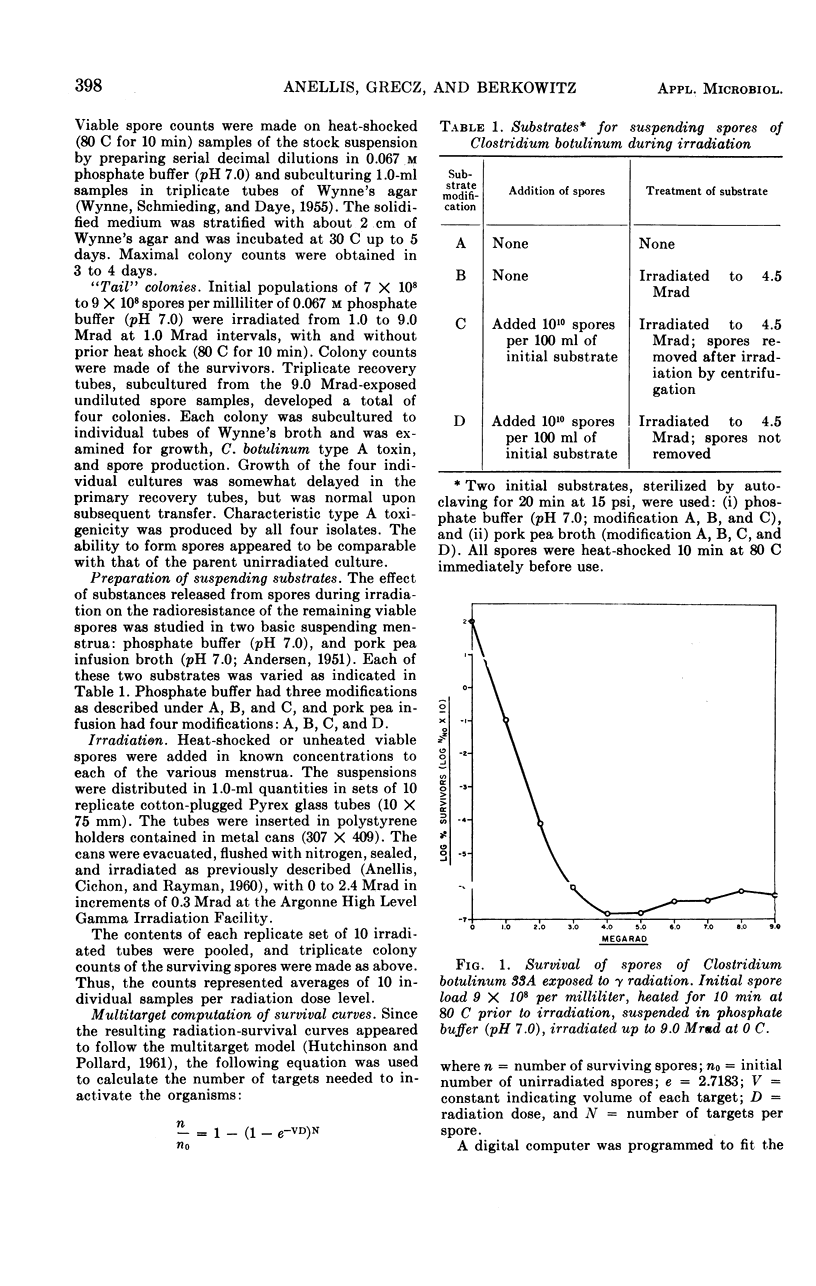Abstract
Radiation survival curves of spores of Clostridium botulinum strain 33A exhibited an exponential reduction which accounted for most of the population, followed by a “tail” comprising a very small residual number [7 to 0.7 spore(s) per ml] which resisted death in the range between 3.0 and 9.0 Mrad dose levels. The “tail” was not caused by protective spore substances released into the suspensions during irradiation, by the presence of accumulated radiation “inactivated” spores, or by heat shock of pre-irradiated spores. The theoretical number of spore targets which must be inactivated by irradiation was estimated both by a graphical and by a computation method to be about 80, and the D value was calculated to be 0.295 and 0.396 Mrad, respectively, in buffer and in pork pea broth.
Full text
PDF




Selected References
These references are in PubMed. This may not be the complete list of references from this article.
- ANELLIS A., KOCH R. B. Comparative resistance of strains of Clostridium botulinum to gamma rays. Appl Microbiol. 1962 Jul;10:326–330. doi: 10.1128/am.10.4.326-330.1962. [DOI] [PMC free article] [PubMed] [Google Scholar]
- ERDMAN I. E., THATCHER F. S., MACQUEEN K. F. Studies on the irradiation of microorganisms in relation to food preservation. II. Irradiation resistant mutants. Can J Microbiol. 1961 Apr;7:207–215. doi: 10.1139/m61-027. [DOI] [PubMed] [Google Scholar]
- GADEN E. L., Jr, HENLEY E. J. Induced resistance to gamma irradiation in Escherichia coli. J Bacteriol. 1953 Jun;65(6):727–732. doi: 10.1128/jb.65.6.727-732.1953. [DOI] [PMC free article] [PubMed] [Google Scholar]
- GUNTER S. E., KOHN H. I. Der Nachweis von Staphylokikken im Stuhl von Sauglingen und Kleinkindern, seine Deutung und Fehldeutung. J Bacteriol. 1956 May;71(5):571–581. doi: 10.1128/jb.71.5.571-581.1956. [DOI] [PMC free article] [PubMed] [Google Scholar]
- KOH W. Y., MOREHOUSE C. T., CHANDLER V. L. Incidence and characteristics of beta radiation survivors (Escherichia coli). Appl Microbiol. 1956 May;4(3):153–155. doi: 10.1128/am.4.3.153-155.1956. [DOI] [PMC free article] [PubMed] [Google Scholar]
- LEVINSON H. S., HYATT M. T. Some effects of heat and ionizing radiation on spores of Bacillus megaterium. J Bacteriol. 1960 Oct;80:441–451. doi: 10.1128/jb.80.4.441-451.1960. [DOI] [PMC free article] [PubMed] [Google Scholar]
- PEPPER R. E., BUFFA N. T., CHANDLER V. L. Relative resistances of micro-organisms to cathode rays. III. Bacterial spores. Appl Microbiol. 1956 May;4(3):149–152. doi: 10.1128/am.4.3.149-152.1956. [DOI] [PMC free article] [PubMed] [Google Scholar]


